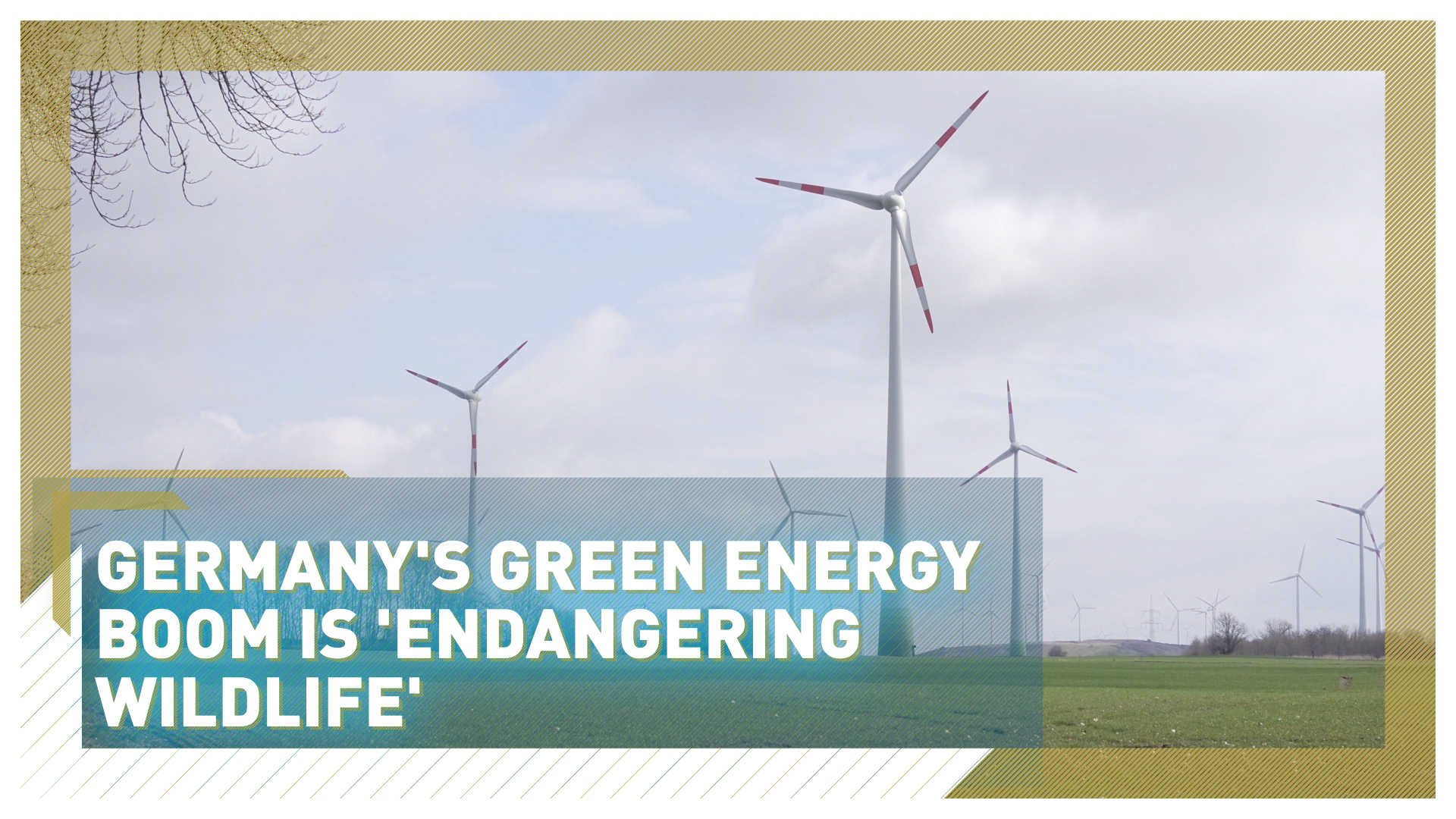03:31

Hydrocarbon power plants, fracking for gas and drilling for oil are all synonymous with global warming.
But head west out of Berlin and slicing through the farmlands of Brandenburg, you will find hundreds of wind turbines.
They are part of Germany's plan to abandon hydrocarbon power and switch to renewable energy, with the goal of making the country's energy mix completely green. However, renewables can also be highly contentious, even among environment campaigners.
READ MORE
Where did COVID-19 come from?
Suez Canal unblocked: What next?
Rehoming endangered hedgehogs

Wind turbines are thought to be particularly dangerous for birds and bats. /CFP
Wind turbines are thought to be particularly dangerous for birds and bats. /CFP
Speaking about German plans to clear an area of forest near protected biodiversity to make space for wind turbines, SEO Birdlife's organization director, Miguel Lopez, said he feels there should be a different approach.
"What can make a difference is a clear map where there are protected areas, so we won't put nature at risk and where renewables can do their work, a work that we really need," said the conservationist.
The thumping sound of the giant blades can be heard throughout the quiet farmlands, a sign that Germany has fully adopted its green agenda and is aiming to meet its climate goals of becoming greenhouse gas neutral by 2050.
But before getting there, there's another hurdle: The European Court of Justice.
Onshore wind power expansion in Germany is set to slow down after the EU's Supreme Court reinforced bird protection in wind turbine construction projects.
Wind turbines are often cited as being particularly bad for birds and bats. Birds of prey, for instance, have a blind spot in front of them and look down as they search for food.
READ MORE: Which countries are performing best and worst on climate change?
The towering structures can also force birds to deviate from their regular routes between breeding and feeding areas, meaning they have to travel long distances, which can ultimately leave them with less energy to raise young.
Poor planning has led to wind farms being built in biodiversity hotspots or close to them.
While most animal welfare groups say the government is not doing much, Stephan Gabriel Haufe from the German Environmental Ministry, says all issues in protecting nature are taken into consideration.
"There is always a problem with the conservation of landscape and nature if we want to have energy and the big advantage of having solar and wind energy is that we really discuss all the environmental aspects that are now coming into our parks and fields."
The opponents have been examining the mechanical skyline and warn of what they see as the dangers of too much wind energy.
But with several lawsuits slowing down the construction of wind farms by three to five years, Germany's environmental goals could be blown off course.

